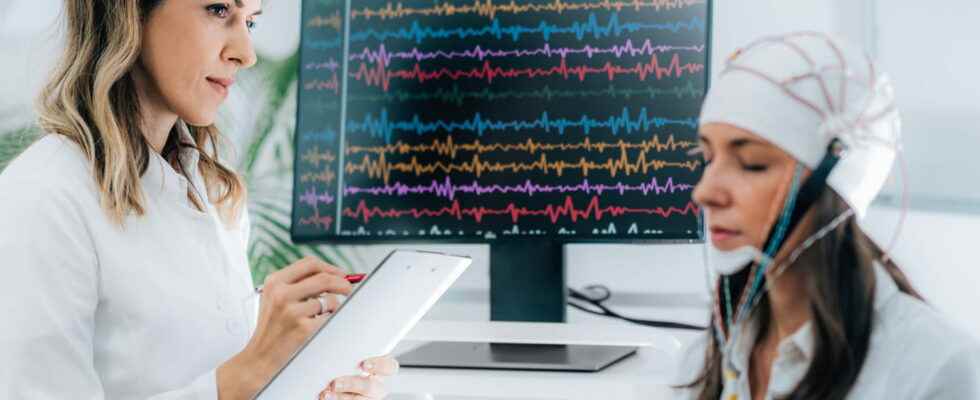Parkinson’s disease does not only affect the elderly. The early form, that is to say before the age of 50, would affect between 5 and 10% of patients. Tremors, sleep disturbances, anxiety… Many are the symptoms. How to make a diagnosis? How to cure the disease?
Is it possible to have Parkinson’s young?
If Parkinson’s disease usually occurs from 60 years oldit is however possible to be reached in a way early (before 50 years old). It is a degenerative brain disease often accompanied by motor and non-motor symptoms that can lead to further complications.
At what age does early Parkinson’s disease appear?
“It is considered to be an early form from the age of 40s. There are even cases that appear around 20 years old but the older you get, the rarer it is“, explains Professor Luc Defebvre, neurologist at the Lille Parkinson Expert Center.
What are the symptoms of early Parkinson’s disease?
The symptoms of an early Parkinson’s disease are essentially the same as for a Parkinson’s disease contracted in the sixties. The patient feels as follows:
- A slowness of gestures
- A limb stiffness
- A tremor at rest
- A motor symptom is however seen more in young people: it is the dystonia, an abnormal position of a limb. “The foot can twist painfully when running, for example”.
Parkinson’s disease also causes non-motor symptoms as :
- Disorders of smell
- Sleep disturbances (nightmares)
- A change in character
- anxiety
- Depression
- Loss of motivation in daily activities.
Why can Parkinson’s disease start in a young person?
“In 20 to 25% of cases, we notice that there is a family plot in young people with Parkinson’s disease. Young patients therefore tend to contract genetic forms“, says Professor Defebvre.
The diagnosis is mainly based on observations during clinical examination (trembling, slowness of gestures, etc.). A functional imaging examination to study the metabolism of the brain can be proposed. “The Datscan brain scan where the Fluro-dopa pet scan make it possible to specify the level of fixation of these tracers in the brain. If a loss of fixation is observed, this means that there is a loss of dopamine.“Dopamine is a useful neurotransmitter in controlling functions like movement, cognition, or even motivation.”This degeneration of dopamine neurons is quite systematicespecially in cases of early Parkinson’s.” A genetic test – to confirm or not a family origin – and possibly a Brain MRI can complete the diagnosis in order to eliminate other rarer diseases.
The proposed treatment for Parkinson’s disease aims to compensate for the loss of dopamine in the brain. For this, doctors mainly prescribe L-DOPA orally, a precursor of dopamine. Of the dopamine agonists are also offered. Their action is more prolonged than L-DOPA but we must however remain cautious because this treatment has potential side effects on behavior and alertness. “We therefore avoid proposing very high doses from the start of treatment to avoid serious side effects, warns Professor Defebvre. He also recommends engage in regular physical activity and sports or even reinforced because it slows down the progression of the disease.
What is the life expectancy for the early form?
“The life expectancy of people with Parkinson’s has greatly increased over the past 20 years, assures Luc Defebvre. We regularly see patients exceed the age of 80. But it is very difficult to estimate the life expectancy because each patient has his evolutionary profile.“
Thanks to Pr Luc Defebvre, head of the Neurology and Movement Pathology department at the University Hospital of Lille and President of the College of Neurology Teachers.
